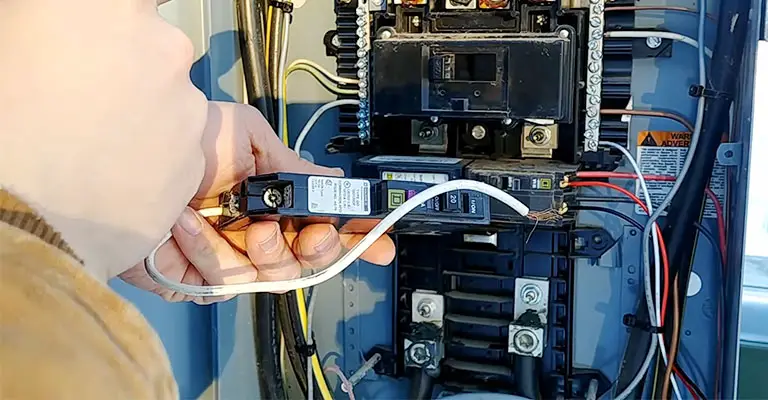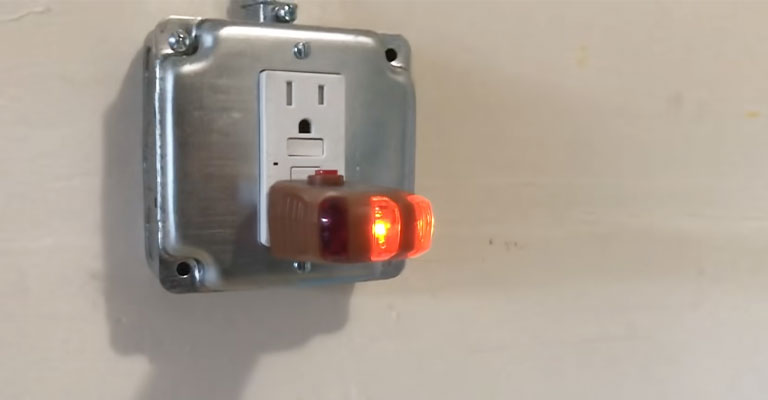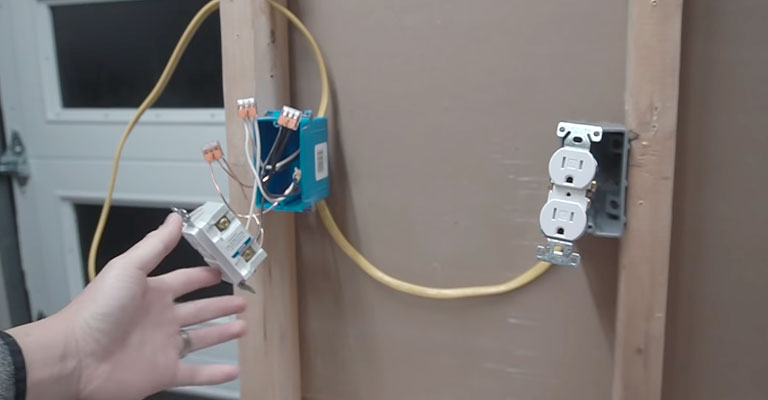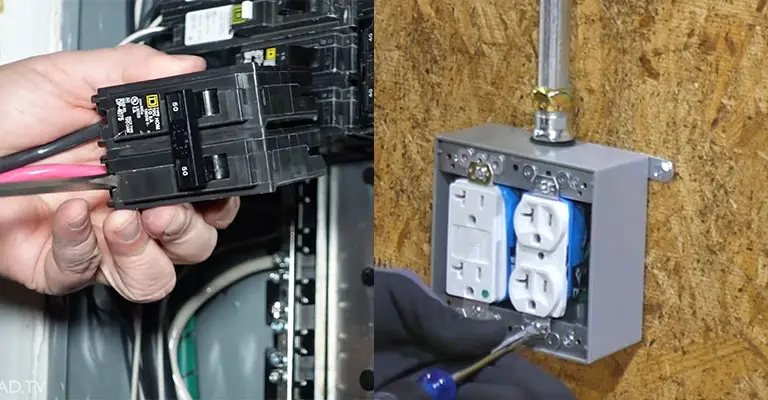There are no restrictions on this, but you might run into coordination issues between the GFCI trip units on the GFCI breakers and the downstream GFCI receptacles.
The reason is that they are both typically designed to trip on unbalanced/leakage currents greater than 5mA. It is, therefore, a “race” between the two devices to determine which trips first when there is a ground fault.
A GFI that is fed from another GFI is not a problem. There is only one downside: troubleshooting. So, the first step in identifying the cause of a trip is to isolate it.
The two can even trip simultaneously. Therefore, using GFCI breakers on receptacle circuits (without GFCI receptacles) is disadvantageous if a ground fault occurs.
It simultaneously de-energized every receptacle and load attached to those receptacles, which may be annoying depending on the circuit configuration and loads.
In terms of their disadvantage, GFCI receptacles are potentially expensive. The upstream GFCI receptacle can be subfed from the protected/load side to non-GFCI receptacles on the same circuit.
The GFCI Circuit Breaker: What Is It?

GFCI circuit breakers protect the entire circuit. The GFCI circuit breaker has a simple design. It provides GFCI protection to a whole circuit by installing one in a service panel (breaker box).
In addition to the wiring, the circuit also includes all connected appliances and devices. Dual-function GFCI/AFCI circuit breakers can be used when AFCI (arc-fault circuit interrupter) protection is also required (an increasingly common scenario).
The use of GFCI circuit breakers is more practical when all outlets on a circuit need to be protected. For example, installing a receptacle circuit in a large patio area or a garage workshop.
This circuit should be wired with GFCI breakers since all of the plugs require GFCI protection.
The cost of GFCI breakers can be pretty high, so this may not be the most cost-effective option for every project. However, a GFCI outlet could also provide the same protection at a lower cost than the first outlet on the circuit.
What Are GFCI Receptacles?

If you look at a receptacle, you can tell whether it is GFCI or not. There is usually a red (or possibly a white) reset button on the faceplate of an electrical outlet with a GFCI.
Energy consumption is monitored by the outlet when it is in use. In addition, a receptacle is designed to trip the circuit in a fraction of a second if it detects any electrical overload or imbalance.
GFCI receptacles are used instead of standard outlets to protect a single outlet location. Two different levels of security can be provided by GFCI receptacles, however.
One GFCI receptacle is protected by single-location protection. Each GFCI receptacle (including standard receptacles) downstream of the first will be protected by multi-location wiring.
As far as the circuit between it and the main service panel is concerned, it is not protected.
For instance, a GFCI outlet with multiple-location protection would not protect the first three outlets if it is the fourth outlet in a circuit with seven outlets.
If you want to reset a breaker, you have to go to the service panel. Resetting a receptacle is usually easier.
GFCIs are receptacles that are designed to protect multiple locations simultaneously, but the receptacle controls everything downstream. You must go back to the GFCI receptacle to reset it if there is a wiring issue downstream.
Since GFCI circuit breakers do the same thing as GFCI receptacles, you must weigh both advantages and disadvantages before choosing one.
Which Comes First, The GFCI Protection Or The Receptacle?

What is the best place to install a GFCI protection device? Does it belong in the panel or the receptacle? It is optional to have both on the same circuit.
Everything connected to a branch circuit, such as receptacles, lights, appliances, and so on, is protected by a GFCI circuit breaker.
Consider this option for new branch circuits, especially if you plan to combine GFCI (shock protection) and AFCI (fire protection) protections.
In some cases, however, GFCI breakers may not work correctly with existing wiring systems, multiwire branch circuits, or sensitive equipment. Simple solutions include installing GFCI outlets further down the line or at the branch circuit’s end.
As well as portable GFCI devices, many options are available for use outdoors, in construction projects, and in travel.
Is It Better To Install A GFCI Outlet Over A GFCI Circuit Breaker?

The GFCI breaker must be reset at the service panel when it trips. In addition, the location of the GFCI receptacle must be accessible if the receptacle trips.
GFCI receptacles must be located in easy-accessible locations according to the National Electrical Code (NEC) so that resetting them is simple in the event of a trip.
Furniture or appliances cannot be installed behind GFCI receptacles. Consider using GFCI breakers in these locations if you have receptacles needing GFCI protection.
The installation of GFCI receptacles is easier. It is sometimes a question of efficiency that determines the decision. For example, you might require GFCI protection to protect just one or two receptacles.
You should do so if you want to add GFCI receptacles to a bathroom or laundry room. Replacing a receptacle is less challenging and safer than replacing a circuit breaker if you aren’t familiar with working on service panels.
The size of GFCI receptacles differs from standard receptacles, affecting your choice in some cases. It might not be possible to safely add a GFCI receptacle to standard-size boxes, so a GFCI circuit breaker would be the best option.
In addition to cost, there are other factors to consider. For example, it is common for GFCI receptacles to cost around $15. Therefore, you can expect to pay $40 or $50 for a GFCI breaker, compared to $4 to $6 for a standard breaker.
When money is an issue, GFCI outlets are a better choice than GFCI breakers for protecting a single location.
As a final consideration, the local electrical code may have GFCI requirements that differ from those suggested by the NEC. For more information, contact the building department in your area.
Final Words
To avoid confusion, replace the downstream GFCI with a standard device if you have one downstream from another. For example, I recommend installing a standard breaker and replacing both receptacles with GFIs.
In addition to protection, you also get a greater degree of convenience. You can get all that for just a few more dollars. For GFCI receptacles and GFCI breakers in your area, always consult your local electrical inspector.






